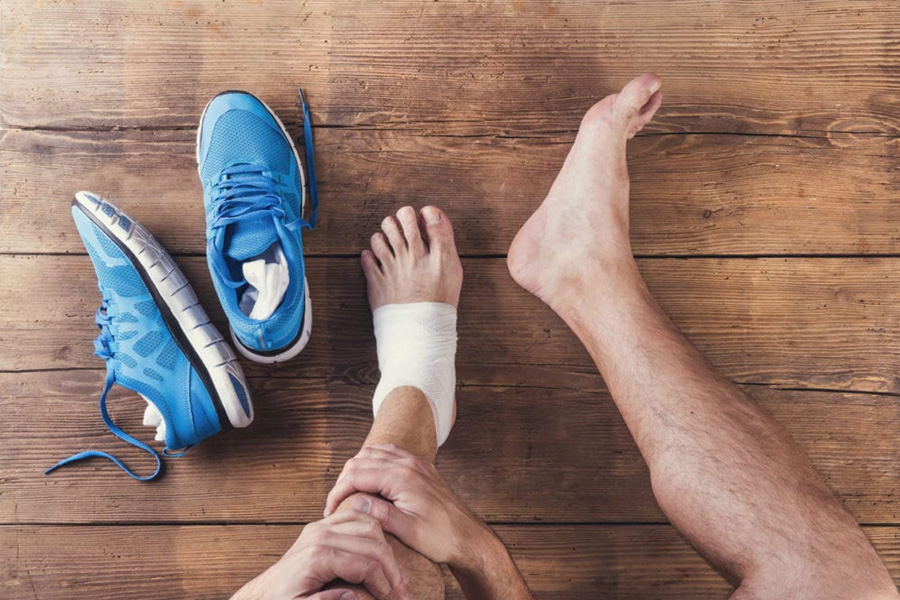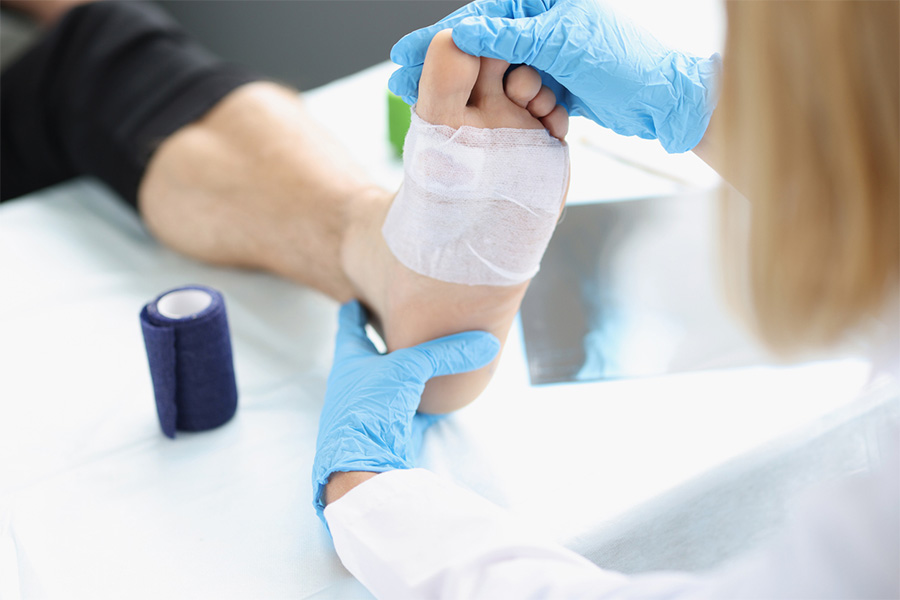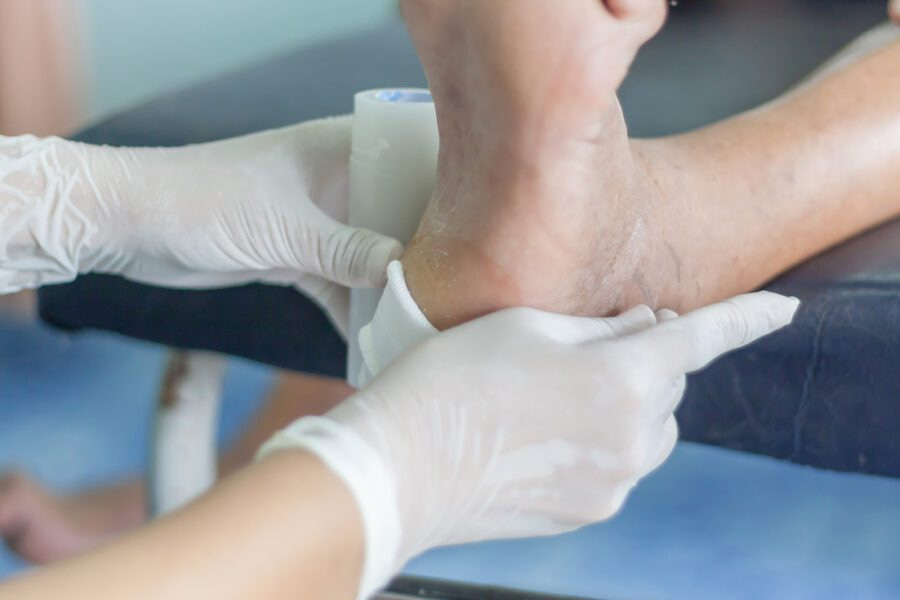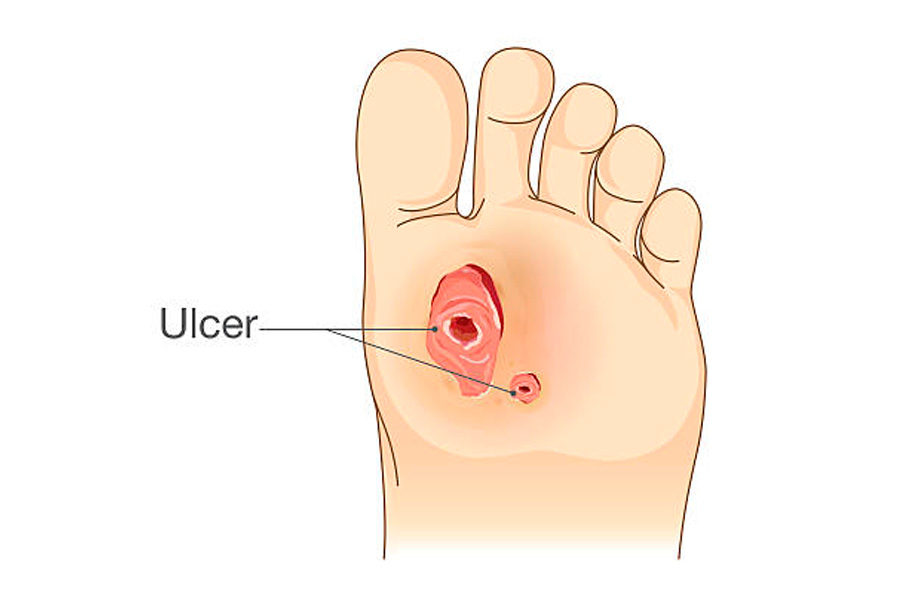Athlete’s foot, or tinea pedis, is a fungal infection that affects the skin of the feet. It is caused by a fungus that thrives in moist environments, like sweaty socks and between toes. The infection can spread to other parts of the body if not treated properly. Athlete’s foot is most commonly seen in young adults and children, and it can be quite contagious. Let’s talk about some tips on how to treat your child’s athlete’s foot and where you can go in Cincinnati to get the best foot and ankle care available.
What Is Athlete’s Foot?
Athlete’s foot is a fungus that can grow on the skin of your feet. It is a form of ringworm and is most common in children and young adults. The fungus that causes athlete’s foot can also spread to other parts of your body, like your groin or armpits, although most commonly, it remains in the feet, affecting the heels, soles of the feet, tops of the feet, and between the toes.
How Do Children Get Athlete’s Foot?
Children can get athlete’s foot by coming in contact with the fungus that causes it. This fungus thrives in moist environments, like sweaty socks and between toes. Kids can pick it up in locker rooms, swimming pools, or any moist environment, and many people walk around barefoot or with wet feet. Sharing towels or socks with someone who has athlete’s foot can also put kids at risk of developing the infection.
Signs and Symptoms of Athlete’s Foot
The following are common symptoms of athletes’ foot:
– Itching
– Burning
– Redness
– Cracking or scaling of the skin
– Blisters
– Yellow or brittle toenails
In more severe cases, blisters can develop in the infected area, and the feet may begin to smell bad.
How to Treat Athlete’s Foot
There are a few ways to treat athlete’s foot at home. The most common treatment is a topical antifungal cream or ointment that you can buy over the counter. You’ll want to look for creams that contain miconazole, clotrimazole, terbinafine, or tolnaftate. It is important to follow the medication directions and take the full course of treatment to ensure the infection is fully eradicated.
You can also have your child soak their feet in Burrow’s solution to relieve itching and irritation. Essential oils such as eucalyptus and tea tree oil may also be used to stop the growth of the infection, but they tend to be less effective at completely curing the infection compared to antifungal medication.
If you are using at-home remedies and the infection persists, it is important to see a doctor. They can prescribe medication to clear up the infection, such as an antifungal pill.
Prevention Tips for Athlete’s Foot
You can prevent athlete’s foot by wearing sandals or other open-toed shoes when you are walking around in public places, such as having your child wear flip-flops in the locker room or showers.
In general, you should ensure your child wears socks made of natural fibers, like cotton, which are more breathable. Make sure your child keeps their feet clean and dry and changes their socks often.
Children’s Foot Conditions Treatment Near Me
If your child has an athlete’s foot or any other foot condition affecting their health, our podiatrists at Cincinnati Foot and Ankle are more than happy to help. We have years of experience treating all kinds of pediatric foot conditions, from athlete’s foot to flat feet and sports injuries.
To make an appointment with us, find our location nearest you and call to make an appointment. Additionally, you can use our patient portal to request an appointment. We look forward to getting your child back to their lives and being a kid again!
Share

People with diabetes often experience difficulty healing wounds.




